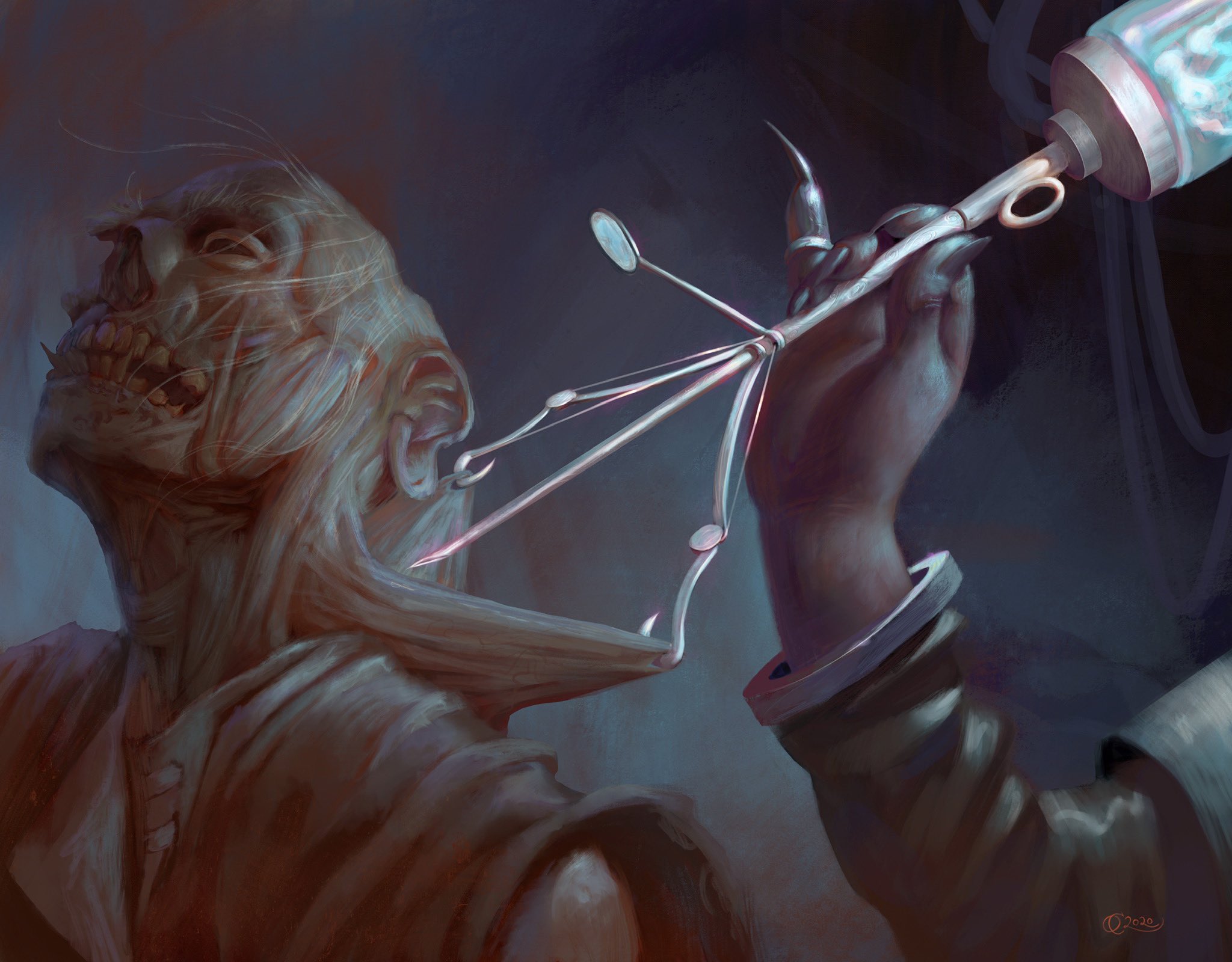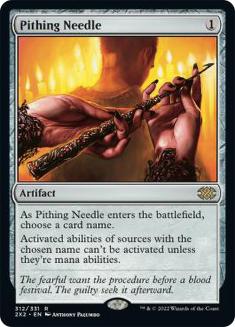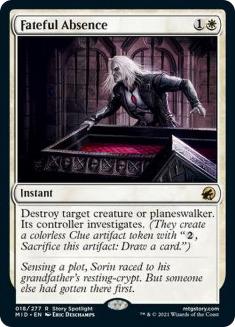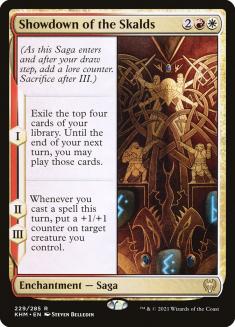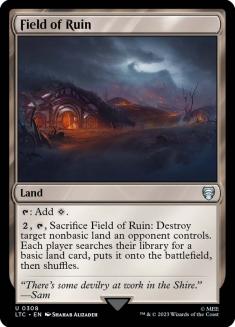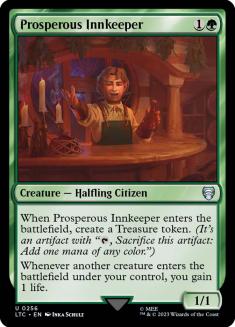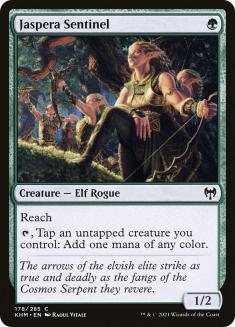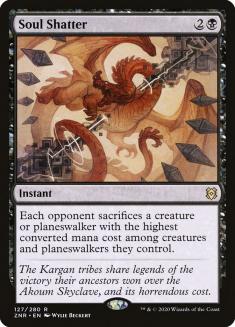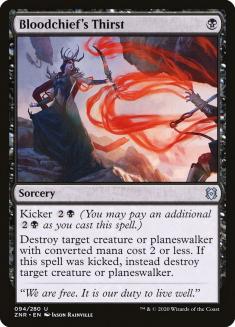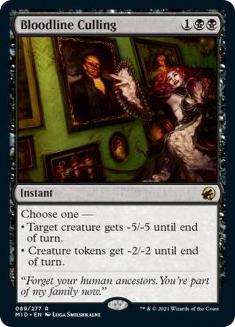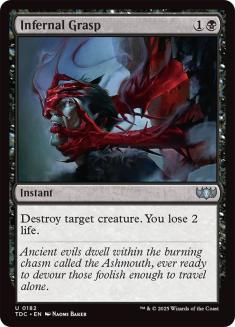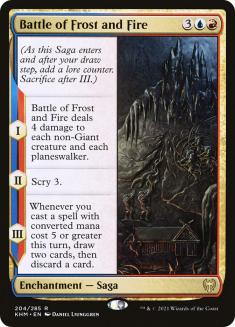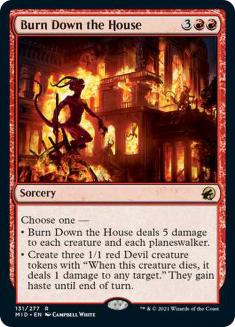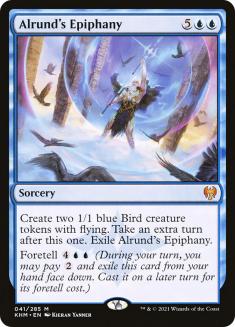The first few weeks after rotation are about limit testing, and answering the questions that process will inspire. What are the fastest aggro decks? What is the best way to gain inevitability over your opponents? Is there a broken combo? What are the absolute must-answer threats?
After a week and a half of Innistrad: Midnight Hunt Standard, I’ve developed a good feel for the answers to these questions, and I’m willing to bet many others who have spent their time in the queues are reaching their answers as well. However, that’s just step one of this process. With the limits defined, it’s now on us to adjust our default card choices and see if we can alter the underlying foundation that the format pillars are laid on.
Today we’re separating the wheat from the chaff in our deckbuilding, with six examinations of card pairings that should begin to see massive divergence in their play rates based on the surrounding metagame. In some cases, these aren’t one-for-one swaps, but more ideas that you should keep in mind when you’re choosing your 75 for an event. Let’s kick it off with what’s sure to be a controversial call-out.
Play This: Pithing Needle
Not That: Fateful Absence
I’m just going to say it. Fateful Absence is a medium-ass Magic card. No one should be going out of their way to play a two-mana quasi-conditional (yes, I’m willing to count “destroy” as conditional these days) removal spell with a downside. Yet, I’ve seen people whom I have the utmost respect for as deckbuilders splash white just to play this card. Here’s a list of better creature removal spells in every color.
- White: Brutal Cathar, Skyclave Apparition
- Green: Blizzard Brawl
- Red: Dragon’s Fire, Cathartic Pyre, Burning Hands
- Blue: Fateful Absence, Divide by Zero
- Black: Like 34 different cards
If you’re still playing Fateful Absence, I’m convinced that you’re doing it because you’re looking for a hedge. You want the removal spell that you can burn early to scale up to take on late-game noncreature problems like Esika’s Chariot, Wrenn and Seven, and creature-lands. Have you considered the card that answers these things far more efficiently and for the remainder of the game? I just have to believe the answer is no.
Pithing Needle is kind of perfect for this format, especially for control decks. The three aforementioned threats would be my starting point for things to name, but there’s plenty of weird stuff floating around out there that access to Pithing Needle can really help control. I’ve named Immerstrum Predator. I’ve named Lithoform Engine. This kind of versatility, alongside the card quantity that some decks are able to produce, makes me believe that you can get away with playing Pithing Needle maindeck at this stage in the metagame.
During Gideon, Ally of Zendikar’s reign of terror in Standard (alongside Aetherworks Marvel to boot), people often bemoaned the fact that we did not have access to a Pithing Needle. Now there’s another dominant planeswalker-plus-Vehicle tandem, and people are just willfully excluding the card for bad spot answers.
Be better. Play Pithing Needle.
Play This: Showdown of the Skalds
Not That: Expensive Cards
Creatures (23)
- 2 Nullpriest of Oblivion
- 2 Immersturm Predator
- 4 Vampire Socialite
- 4 Bloodthirsty Adversary
- 4 Falkenrath Pit Fighter
- 4 Florian, Voldaren Scion
- 3 Voldaren Stinger
Lands (22)
Spells (15)

Creatures (29)
- 4 Codespell Cleric
- 4 Clarion Spirit
- 4 Brutal Cathar
- 4 Chaplain of Alms
- 4 Intrepid Adversary
- 2 Sungold Sentinel
- 3 Adeline, Resplendent Cathar
- 4 Lunarch Veteran
Lands (23)
Spells (8)

It’s frustrating to see us collectively relearning lessons that we already worked our way through in the previous format. Far too many decks are being drawn in by the power of Showdown of the Skalds, but refusing to make the deckbuilding sacrifices it demands. Goldspan Dragons, Esika’s Chariots, Wrenn and Sevens, and other four- or five-mana cards are routinely creeping into lists alongside Showdown. That’s just not how this works.
Maximize your ability to play the full four cards off Showdown of the Skalds, to take advantage of both its card advantage and its ability to make large threats. Step 1: plenty of cheap spells. Step 2: scaling effects like Nullpriest of Oblivion, Bloodthirsty Adversary, and Intrepid Adversary. Step 3: a small sprinkling of modal double-faced cards, particularly Shatterskull Smashing.
Just like that, expect to have much stronger Showdown of the Skalds.
Play This: Field of Ruin
Not That: Nonbasic Lands
Well, don’t take this one literally. Nonbasics remain a key part of our manabases. I have seen folks get progressively greedier in terms of basic land counts though, with some lists skipping them all together. That just isn’t going to fly in this format, given how good Field of Ruin is.
Creature-lands are absolutely everywhere, and serve as a late-game for many archetypes. These things aren’t Mutavaults either — they hit like absolute trucks. 5/5s, X/Xs, 4/3s… 1/1 Blinkmoth Nexus is an absolute relic of the past.
Pathways tend to make the addition of third colors relatively low-cost if the splash is light enough, but Field of Ruin and its ability to control an opponent’s aggression from their manabase is a huge draw for any two-color deck that isn’t attempting to end the game in the first five or six turns.
On the other side of the coin, don’t be the player who gets Field of Ruined with no basics to search up. Especially in the world of open decklists, no one should get a free win for the low cost of a single Field of Ruin activation.
Play This: Prosperous Innkeeper
Not That: Jaspera Sentinel
Creatures (20)
- 4 Goldspan Dragon
- 1 Immersturm Predator
- 3 Prosperous Innkeeper
- 4 Shambling Ghast
- 2 Kalain, Reclusive Painter
- 4 Briarbridge Tracker
- 2 Reckless Stormseeker
Planeswalkers (3)
Lands (22)
Spells (15)

I know how good it feels to tap your Magda, Brazen Outlaw with a Jaspera Sentinel on Turn 2. I’ve seen the screen caps of the Turn 3 Goldspan Dragon that vomits your hand on to the battlefield. But behind those high spots, there’s an army of Jaspera Sentinels that were murdered on the spot or popped off your deck in the late-game to be the worst topdeck possible. And let’s not even talk about the Magdas that have the audacity to show up to the party without their best friend. This combo just goes wrong far more often than we’d like to admit.
I’m betting on the tortoise in this classic race and taking the slow and steady mana output of Prosperous Innkeeper alongside its best friends Shambling Ghast and Kalain, Reclusive Painter. Magda + Sentinel was fine for the early days of the format when there was an unspoken agreement that we just wouldn’t interact with each other. These days, there are far more copies of Cinderclasm, Burn Down the House, and other sweepers around, and I want to punish those effects by having a massive follow-up turn. Don’t sleep on the persistent lifegain of Prosperous Innkeeper either.
Play This: Soul Shatter, Bloodchief’s Thirst, Bloodline Culling
Not That: Infernal Grasp
I get that Infernal Grasp seems like it’s asking a fair price, and in a lot of metagames, I’d be on board with it. Honestly, I’m still playing copies now. The card is completely fine. But everytime I see a list with four Infernal Grasp I absolutely cringe. Gruul Aggro will punish you for the life loss, and since it costs two mana, the tempo loss will often cost you your two-spell turn in your aggressive deck. This seems unacceptable when there are strong one-mana options available, and extremely versatile three-mana options.
If you’re in the market for big tempo turns, there’s no reason to shy away from Bloodchief’s Thirst. There are plenty of one- and two-mana creatures that deserve an answer right now, and the broad coverage you get in the late-game is welcome in a format of diverse threats. Sure, it’s got holes like creature-lands, but this is why a diversified removal suite is the way to go.
At three-mana, Soul Shatter’s ability to answer a Goldspan Dragon before it makes a Treasure will keep it in my good graces as long as the two share a format. However, Bloodline Culling feels like the card that everyone is sleeping on right now. It kills basically every creature short of a Wrenn and Seven token, but it really shines at cleaning up the omnipresent Esika’s Chariot tokens or a Scute Swarm that’s gotten out of control. I’m not looking to play huge numbers of Bloodline Culling, but decks could steal a lot of games if they just add one or two copies to their removal suites.
Play This: Battle of Frost and Fire
Not That: Burn Down the House
Lands (24)
Spells (36)

This is a very specific tip for what I currently believe to be the best deck in the format. And boy do I have to eat my words on this one. When the Izzet Turns list made its way on to my radar, the very first thing I did was exchange Battle of Frost and Fire for Burn Down the House. Surely the modality, extra point of damage, and ability to copy the effect with Galvanic Iteration made it the superior option, right?
Having now played the deck a ton, I don’t think so. There are two huge points in favor of Battle of Frost and Fire in this list. First, the ability to return your own Battle of Frost and Fire to your hand with Divide by Zero is absolutely backbreaking for the most linear aggressive decks. There’s just no way for them to consistently pressure you through that combination of card selection and card advantage and it turns Divide by Zero from a liability in the matchup into one of your best tools.
Second, this deck isn’t just helped by Alrund’s Epiphany, it’s entirely reliant on casting it multiple times in rapid succession. The triggers granted by the second and third chapter of Battle of Frost and Fire aren’t upside; they’re the very core of your gameplan. Either they can transition you to the perfect cards for survival until your eight-mana, two-Epiphany turn, or they give you the missing piece you need to execute your “combo.”
If you made this same change in the dark like I did, go back and give Battle of Frost and Fire a shot. I thought Burn Down the House’s fifth point of damage was going to be critical against Wrenn and Seven and its tokens, but savvy players will wisely protect their planeswalker anyway. You need to deal with the card other ways, so just reap the benefits of Battle of Frost and Fire.
Play This: Alrund’s Epiphany
Not That: Everything Else
This one is a tough pill to swallow. No one wants to register an Eyetwitch more than I do. Incremental value over time? Sign me up. A mediocre tribal beatdown deck leveraging a questionable lord for card advantage? Yes please. However, at some point, reality will set in.
This is reality in this format.
I don’t care if it’s Izzet Dragons❄, Izzet Turns, Sultai Ramp, Dimir Rogues, Mono-Blue Aggro❄… Alrund’s Epiphany will make clear that it’s the biggest thing you can do in the format, and if you don’t have a plan to end a game before it arrives or challenge it directly, you’re just fooling yourself.
Creatures (19)
- 3 Zareth San, the Trickster
- 4 Nighthawk Scavenger
- 3 Thieving Skydiver
- 1 Glasspool Mimic
- 4 Suspicious Stowaway
- 4 Malevolent Hermit
Lands (24)
Spells (17)

Much like how Emergent Ultimatum set a deadline on last Standard, Alrund’s Epiphany will do the same for Innistrad: Midnight Hunt Standard. If you deny this reality, you might have some good matchups, but will eventually find yourself at the mercy of the individuals who’re playing the best spell in the format. Add in the fact that the best answers to Alrund’s Epiphany tend to be blue, and now we’ve got a bit of a feedback loop where the decks targeting Epiphany will just play Epiphany themselves.
This is how we end up with a massive metagame share for Epiphany decks, and as soon as there are high-stakes tournaments I think we’ll start to see this play out. What does this mean for your deck choices? For now, I’d say just play Alrund’s Epiphany, probably in the form of Izzet Turns until people accept the lot we’ve been handed in life. Once everyone starts jumping on the bandwagon and becoming more and more fixated on beating Epiphany, I expect we’ll see aggressive decks splashing Negate and Disdainful Stroke pick up steam. This will probably start with Gruul Aggro expanding to Temur Aggro, but Dimir Zombies, more aggressive forms of Izzet Dragons❄, or some other tribal deck could also be the order of the day.
The next step after that? Pray that Innistrad: Crimson Vow brings us some relief from Birds and turns, because this is an Alrund’s Epiphany-based Standard. The sooner you accept this, the sooner you can start adapting.

